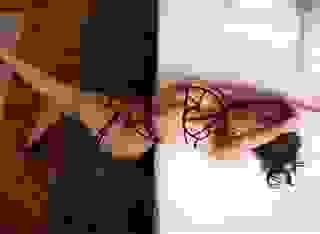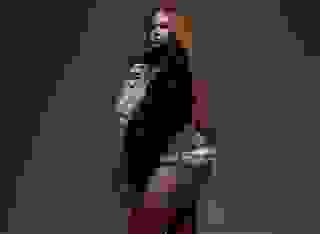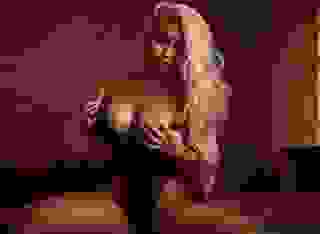Note: You can change font size, font face, and turn on dark mode by clicking the "A" icon tab in the Story Info Box.
You can temporarily switch back to a Classic Literotica® experience during our ongoing public Beta testing. Please consider leaving feedback on issues you experience or suggest improvements.
Click here—So, a Regiment of Ferguson riflemen (or, in Westron's case, riflewomen) would have the fire power of anywhere from 2-3 Regiments of their enemies. It's why a relative handful of Buford's Union Cavalry, armed with Spencer repeating carbines, was able to stack up several Confederate divisions for most of the morning the first day at Gettysburg — certainly one of the decisive moments of that battle.
I know you intend the use the Westron's limited rifles in more open order battle than in massed regiments (although, as you probably know, the open order/skirmishers ultimately fell into the main lines of battle for the decisive phase of a fight), but even that use would mean that 200 skirmishers — fighting from cover and concealment as available and from a more accurate supported firing position — would be throwing a volume of AIMED fire almost equivalent to that of a smoothbore, muzzle loading regiment. And, with respect to rounds-hitting-targets, that amount of aimed rifle fire could be the equivalent of 5-10 regiments of muzzle loading musket infantry. The 2 regiments of sharpshooters Hiram Berdan raised for the Union Army, required a demonstration of rifle marksmanship to become a member of the one of the Regiments. They were often used as skirmishers, snipers, and were also, if needs demanded, put in the line. On the second day at Gettysburg one of these regiments (by 1863, far fewer than the 1000 men they started the war with) was able to delay Longstreet's entire attack before being driven back by sheer numbers. The Sharpshooters — like the British rifle units of the Napoleonic era — wore green uniforms which, of course, functioned as camouflage for skirmishing. Further, Berdan's uniforms had black vs. brass buttons (no shine) and the large gold NCO chevrons were died green, again reducing their visibility. Bernard Cornwell's Richard Sharpe novels — in the novels, Sharpe commands a company of British riflemen — almost always include details about their use of the Baker Rifle (which was short enough to be effectively loaded while prone) in open order battle.
A very old military saying to which I strongly adhere is: Amateurs study tactics, Professionals study logistics. In your wargaming experience, I suspect most, perhaps all, of the strategy is related to logistics. One of the reasons the Union chief of ordnance opposed repeating rifles was his concern that he would not be able to supply enough ammunition to keep them fed. It's the three dimensional chess aspect of military operations that, I think, so fascinates people.
I do have to say that, after leading soldiers in the field, the think I liked most about my military service was the problem solving on the run aspect of it.
Apologies for another long sermon.
At that point, I asked the Colonel if could share his emails with other readers
If you think my observations might be helpful you are free to use them in any way you wish. I should have added the caveat that, while I have be a student of military history for almost XX years now (God, I'm getting old), I am very much aware that others who are equally familiar with the material have drawn different conclusions.
With regard to the Ferguson and fouling. In my experience, any weapon using loose black powder (as opposed to black powder cartridge weapons that predominated in the U.S. military from after the Civil War to the conclusion of the Spanish American War) will eventually become little more than clubs until cleaned . . . Which could not be done while in actual combat. In the Ferguson's case two things worked in its favor with regard to fouling:
1--The threads for screwing/unscrewing the action for loading were VERY coarse — requiring only 3 turns to open/close. Coarse threads are much less susceptible to fouling, in part because they permit more torque to be applied to the action without fear of stripping the threads.
2—Once the action was open, the lead projectile was inserted at the rear of the barrel . . . It didn't have to be driven down the increasingly fouled barrel as would be the case with muzzleloaders. While accuracy would be degraded as the weapon got dirtier during prolonged firing, the pressure of the detonating black powder would still be able to force the projectile thru the barrel.
With regard to gunsmithing (if you haven't been and get a chance to visit Harpers Ferry, you should do it. They have a great display of rifle manufacturing equipment):
—Clearly, with a new design, the first few would be slower to produce. As the gunsmith's became more experienced, production would speed up.
—The Westrons are already building muskets and seem familiar with the concept of rifles, so they already have mastered how to bore holes thru blank barrels. To the extent they have already standardized the barrel drills to produce consistent diameter barrels and are familiar with producing rifled barrels, they are already well on their way. Gunsmith apprentices (which, given your description of Westron, I've assumed their craftsmen and women use an apprentice system) would probably handle a lot of the work and they would probably adapt any parts they already produce (locks, screws, stocks & stock hardware, etc.) for the current weapons to build a new type weapon. The screw in breech — something entirely new — would be the challenge, but 17th century British gun makers were able to to it, so I would think a Westron gunsmith given the basic idea and a few paper sketches, could take it from there.
For some reason I'd forgotten about it, but you might want to take a look at the U.S. M1819 Hall breech loading rifle. An even simpler design than the Ferguson. But even if you went with something like Sharpe's Baker rifle (probably the easiest rifle for Westron gunsmiths using their existing tools and processes), if they are well produced, put in the hands of well trained riflewomen firing quality ammunition, and well trained in open order tactics — it would be revolutionary for Westron warfare.
As I see it, all the detail (particularly the technical stuff) may be valuable for you so you don't write yourself into too many corners, but I don't think your readers would need much if any of it to be captured by an already captivating storyline. Even with the background I have on some of this, if — for example — you decided you wanted to produce the Ferguson and wrote: "It was arranged for me to sit down with two Westron gunsmiths and I described my ideas about a new rifle that would permit loading the barrel from the rear by means of a large screw that could be screwed open for loading, then screwed closed for firing. They scratched their heads a bit, but seemed excited by the possibilities and promised to provide me some models in 4 weeks." For me, as a reader, that's all the detail I'd need.
Something to consider with 17th/18th century rifle units fighting as skirmishers (I.e., open order) regardless of what rifle you put in their hands (if not the Ferguson, perhaps the Baker?). Whereas the line infantry units standing shoulder to shoulder fired thousands and thousands of unaimed rounds into what quickly became almost a wall of smoke and dust, until they fell back into the line (or, in the attack, the line caught up with them), they only fired when they had a target. So the number of rounds they might fire in a given action (and the resulting fouling) would almost always be much lower than that fired by their sister line regiments I the same action. Of course, if they are being presented with massed enemy regiments within range, they probably would be firing at near their max rate of fire, BUT, unlike the line regiments, every one of their rounds would be aimed and — assuming good marksmanship training — every one of their rounds would have a much higher likelihood of hitting something of value . . . Even today, most small arms ammunition fired serves only to prove that gravity works. Skilled 17th/18th century riflemen (if well trained) were much more akin to snipers than to regular line infantry — not just in the weapon they wielded — but in their use of cover, concealment, and individual fire and movement to reduce their vulnerability to return fire.
Here are a series of Civil War art depicting Berdan's Sharpshooters (the first is one hanging on my wall in my library . . . The Doghouse as my wife calls it). These are what I immediately thought of when you had Cook talking about Westron rifle units used in open order tactics. There is no way, with the technology of the day, that line regiments using muzzle loading smoothbore could fight like this . . . If they did, they couldn't mass enough fire at their slow rate of reloading to avoid being overrun by massed regiments.
Notice also that they are all firing with "support", I.e., resting their rifles on rocks, trees, their knees (when kneeling), or with the rifle steadily supported by a forearm resting on the ground when in the prone position. The least accurate firing position is the "offhand" position, I.e., standing with the rifle fully extended from the shoulder and the full weight of the weapon supported only by the stretched out forearm of the weakest arm. This is the position required by the tactics of 17th/18th century regimental line units.
Why wouldn't the Crolians just copy the Westrons? I think you've already alluded to some of why that might not happen when you note the resistance to some of Cook's ideas (and to Cook himself as a regimental commander) by other Westron military leaders — inherent technological and tactical conservatism. In that regard, Westron and the Crolians are very much in line with their 17th/18th Century earth counterparts. Ferguson demonstrated his rifle to the King who was very impressed and ordered it to be looked at, but even with that, all Ferguson could get was the temporary assignment of 160 men due to the military's distrust of this new idea. When Ferguson was killed in battle, his rifle was immediately discarded. Very often the reaction of pre-modern militaries to battlefield failure was to ascribe it to poor leadership, cowardly soldiers, bad luck, or not doing a good enough job of adhering to current doctrine, I.e., it's not that the enemy has come up with a game-changing innovation, we just aren't doing what we do well enough, so go do the same thing, just do it better this time. It would not be at all a stretch to posit the Crolians as being of that mindset. Remember, even with the experience of WW1 and watching the German blitzkrieg roll over Poland, the U.S. didn't disband it's last horse cavalry units until 1942.
The quality of powder would be, I think, especially important for riflewomen and artillery. In some respects, as long as the powder was sufficient to push a ball at least 50 yards out of the barrel of a muzzle loading smoothbore, it would probably be sufficient for the line infantry of the day. But if you want to take advantage of rifles, consistent, good quality powder is critical. Powder quality would be mostly a function of: A proven formula of ingredients, consistent adherence to the formula during mixing, good record keeping (date of production driving use of oldest powder first), and good storage (in the short term that's mostly keeping it dry, if stored long term, consistent temps are important).
Remember also, 17th/18th Century armies used pre-made (or soldier made in the field using specific tools), paper wrapped, individual rounds of ammo. If they carried a powder horn, it was to prime the pan under the frizzen (the frizzen being the hinged steel cover the flint in the hammer hit, driving a spark into the pan which then ignited and, thru a hole in the pan, then ignited the main charge in the barrel). So, even the best powder could be overcome if the factories/shops that produce the ammunition don't store it properly.
I used Buford's cavalry at Gettysburg only as an example of how a superior rate of fire by a relatively open order force could severely damage regular line regiments. For your purposes, the better example might be the Berdan Sharpshooter Regiment (which would have been fighting much like the pictures provided, above) opposing Longstreet on day 2 of Gettysburg. Still single shot rifles, but they were breech loading, percussion sharps rifles, which had a much higher rate of fire than the muzzle loading Springfield and Enfield rifles in the hands of the opposing line regiments. And the Sharpshooters were very well trained (and by 1863, experienced) riflemen.
You have no idea how much I am enjoying this, thank you.
The Colonel also sent me this:
Source: https://armourersbench.com/2018/10/15/the-ferguson-rifle
"An account of the demonstration was published in a number of publications including The Gentleman's Magazine and the Annual Register, a yearly almanac of notable events:
"under the disadvantages of heavy rain and a high wind, performed the following four things, none of which had ever been accomplished with any other small arms. 1st, He fired during four or five minute at a target, at 200 yards distance, at the rate of four shots each minute. 2dly(sic), He fired six shots in one minute. 3dly, He fired four times per minute advancing at the same time at the rate of four miles in the hour. 4thly, He poured a bottle of water into the pan and barrel of the piece when loaded, so as to wet every grain of the powder, and in less than half a minute fired her as well as ever, without extracting the ball. [This suggests that Ferguson cleared the sodden powder from the pan and re-primed, with the ball protecting the powder behind it.] He also hit the bull's eye at 100 yards, lying with his back on the ground; and, notwithstanding the unequalness of the wind and wetness of the weather, he only missed the target three times during the whole course of the experiments."
The demonstration had a dramatic effect, Lord Townsend, the Master General of Ordnance, directed that 100 rifles should be produced and that Ferguson was to oversee their production. Up until this point Captain Ferguson had paid for all of the testing and development of the rifle himself. Now four Birmingham gun makers were contracted by the Board of Ordnance to produce 25 rifles each, these companies were: William Grice, Benjamin Willetts, Matthias Barker [likely in partnership with John Whateley] and Samuel Galton & Son. Birmingham was then the hub of British gun manufacture, in 1788 it was estimated that some 4,000 gun makers were at work in the area. Each contractor was paid £100 for 25 guns, giving the rifles a cost of £4 each. Sources disagree over what the plugs were made from, some sources suggest that half of the 100 guns were made with bronze or brass breech plugs (the surviving example at Morristown National Historic Park in Morristown, NJ, has a bronze/brass plug, although this may be a later replacement.)"
Despite what sounds like an incredible success, it was not enough to overcome British Army conservatism although, if Ferguson had lived to continue championing it, who knows?
In your reading on the Baker (or, more likely in the Sharpe novels and it was shown in some detail in the Sharpe TV series) have you come across the technique of "Tap Loading" the Baker (or other muzzle loading rifles for that matter)? This was a technique for speeding up the rate of fire for rifles in two primary situations:
1—Late in a battle when the barrels were so fouled that using the ramrod really slowed rate of fire. Tap loading permitted the rifle to be loaded quickly, taking advantage of the fact the balls were smaller diameter than the barrel. While they would not be as accurate as a well seated, rammed round, from the demonstration I found, it was probably more than adequate at 100 yards, particularly when fired by a well trained marksman: https://www.youtube.com/watch?v=Pvc86ggLUY4 ... they aren't using reproduction Bakers, but they are Napoleonic era muzzle loading rifles.
2—If the riflemen were ultimately forced or required to stand in a line of battle fight, they were actually at somewhat of a disadvantage standing in front of lines of soldiers armed with muzzle loading smoothbores since the smoothbores, being easier to load (no forcing bullets against rifling), had a higher rate of fire. Tap loading in those circumstances evened the odd rate-of-fire wise and, again, were still more accurate than smoothbores . . . So at least the same rate of fire from trained marksmen using tap loaded rifles would, I believe, have resulted in many more hits for the riflemen even at line of battle ranges. I suspect even in the line of battle, the riflemen would have fired from the steadier. kneeling position, if possible. Here is a video I found of longer range Baker Rifle shooting: https://www.youtube.com/watch?v=MEd7UI0HXNc
Finally, I also thought you might enjoy seeing a demonstration firing of the Ferguson: https://www.youtube.com/watch?v=5ODhQmE2OqY
The Colonel made several suggestions - including a medical service (which I had only begun to think about - and that only because I'd made Tisucha a doctor). Here are some more of the Colonel's musings:
—Professionalizing Military Intelligence: Westrons have already started down that path with their questioning of the oxen wagon drovers. By the end of the Napoleonic Wars,
the Brits had a pretty good Intel system that, in large part, leveraged the many European exiles that had shown up in England to escape the French Terror and, later,
Napoleons excesses. Are the Crolians oppressing any of their people to the point that fleeing to Westron would be an option? Certainly, given how physically different the
races are, sending one of their own as a spy would be problematic at best . . . Unless they were fleeing to the Crolians to escape Westron oppression?
10—After reviewing a lot of YouTube vids regarding 18th-mid-19th century military weapons, it becomes clear that even round balls fired from rifles are much more accurate to at least 200 yards than the same ammunition fired from smoothbores. So Minie or not, Westron rifle units will be much more lethal. One of the better vids was from Fort Niagara where they had 5 reenactors using smoothbore muskets fire and advance from 200 yards to 50 yards. Part of their intent was to replicate being overheated and short of breath during a fight. Until they got within 50 yards their enemy was mostly safe. Even at 50 yards the target scorers were, I think, being generous and counted all hits to the human silhouettes as equal when it was clear that many might not even be incapacitating, let alone lethal. Other videos clearly demonstrated that an 18th century military flintlock rifle (in this case a Jaeger rifle which, I think, the Baker was modeled after) in the hands of trained marksmen/markswomen could reliably hit a stationary man at 200 yards (meters in the one vid, so 220 yards) firing round balls. Another, using a Baker rifle firing round balls, shows that hitting a specific soldier at 300 yards was challenging, but, give the lateral dispersion, if you were shooting at a row of line infantry, if the specific one you aimed at wasn't hit, one of his buddies to the left or right almost certainly was.








